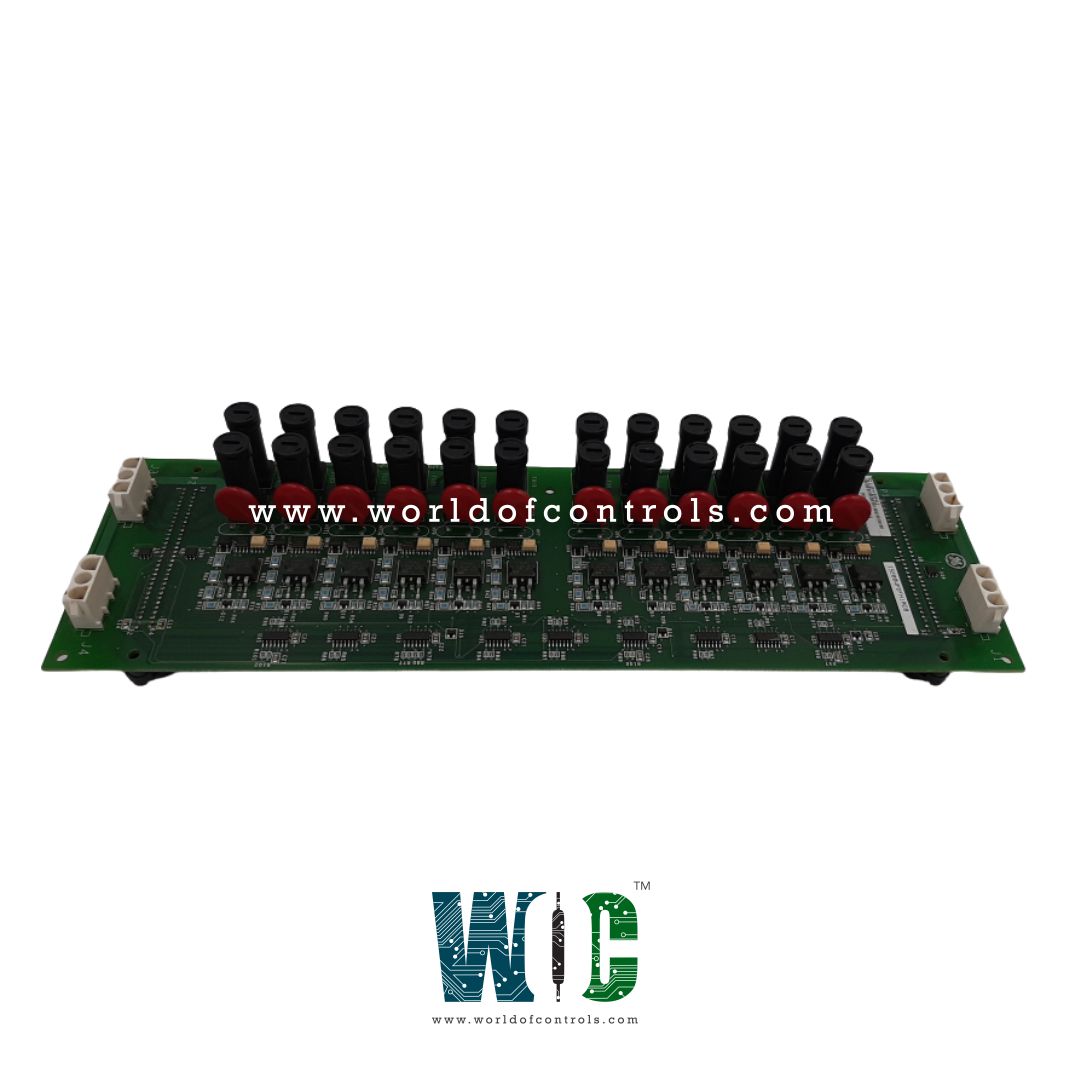SPECIFICATIONS
Part Number: IS200WPDFH1ACB
Manufacturer: General Electric
Country of Manufacture: United States (USA)
Number of relay channels: 12
Size: 8.26 cm x 4.19 cm x 12.1 cm
Technology: Surface-mount
Series: Mark VIe
Function: Relay Output Daughter Board
Functional Description
IS200WPDFH1ACB is a relay output daughter board developed by GE. It is part of the GE Speedtronic Mark VIe gas turbine control system. The board serves as a power distribution unit, designed specifically to supply power to the customer's solenoids, in conjunction with the TRLY terminal board. The daughterboard is intended to provide power to the customer's solenoids, functioning as a crucial component of the control system setup.
Product Features
- It houses two power distribution circuits, each capable of independently supplying power from standard sources such as 125 V dc, 115 V ac, or 24 V dc. These circuits feature six fused branches each, ensuring efficient and reliable power distribution to the connected solenoids.
- The daughterboard is designed to work in conjunction with the terminal board.
- Fused power flows through the board to the terminal board points, ensuring a seamless and controlled power supply to the solenoids.
- Power feedback through the fuses is managed by the terminal board, ensuring proper operation and safety.
- Serves as a vital component in the control system setup, providing efficient power distribution to the customer's solenoids. With its dual power distribution circuits, voltage monitoring capabilities, and seamless integration with the terminal board, it ensures reliable and safe operation of the control system, contributing to its overall effectiveness and functionality.
Voltage Monitoring
- Each branch of the circuit includes a dedicated voltage monitor positioned across its fuse pair secondary. This setup allows for continuous, real-time monitoring of voltage levels within the exciter system. The voltage detectors are configured to provide feedback via three independent open-collector drivers, which interface directly with the I/O processors labeled R, S, and T. This distributed feedback system ensures that any deviations or abnormalities in voltage levels are promptly detected across all phases of operation.
- The voltage monitoring system is designed to provide rapid detection and response to changes in voltage levels. It achieves this with a maximum response delay of typically 60 milliseconds. This swift response time ensures that fluctuations in voltage, whether transient or sustained, are detected promptly, minimizing the risk of operational disruptions or equipment damage.
- The system is sensitive to subtle variations in voltage levels, capable of detecting voltages as low as 16 volts DC or 72 volts AC. This sensitivity enables the system to monitor and respond to even minor deviations in voltage, maintaining stable operation and preventing potential issues before they escalate.
- To ensure efficient operation and minimize power losses, the maximum leakage current for the voltage monitor is limited to 3 milliamperes (mA). This stringent limitation helps in preserving energy efficiency while maintaining continuous monitoring capability. By restricting leakage current, the system optimizes power consumption and enhances overall operational efficiency.
Circuit protection
- Incorporates fault current protection mechanisms to limit the flow of current within the system to levels that are within the capability of the system components. By regulating the current, this protection prevents damage to sensitive components and ensures system reliability.
- Provides feedback on the status and performance of branch circuits within the system. This feedback allows operators to monitor the health of individual circuits and identify any potential issues, such as overloads or faults.
- In systems where floating configurations are utilized, ground fault protection mechanisms are employed to detect and mitigate faults related to ground connections. This protection helps prevent electrical hazards and ensures system safety.
- Whenever feasible, redundant circuit protection schemes are implemented to enhance system reliability. Redundancy ensures that even in the event of a failure or fault in one protection mechanism, the system remains operational and protected
WOC has the largest stock of Speedtronic Mark VIe Spares, and we can repair your faulty spares with a warranty. WORLD OF CONTROLS can also supply unused and rebuilt components backed by a warranty. Our team of experts is available around the clock to support your needs related to critical spares, Contact us.
FREQUENTLY ASKED QUESTIONS
What is IS200WPDFH1ACB?
It is a relay output daughter board and is part of the GE Speedtronic Mark VIe gas turbine control system.
What is the primary function of the daughterboard?
The board serves as a power distribution unit specifically designed to supply power to the customer's solenoids in conjunction with the TRLYH#F terminal board.
What types of power sources can the daughterboard handle?
The daughterboard can independently utilize standard power sources such as 125 V dc, 115 V ac, or 24 V dc to supply power to the solenoids.
How many power distribution circuits does the daughterboard hold?
It holds two power distribution circuits, each capable of independently supplying power to the solenoids.
What is the significance of the fused branches?
Each power distribution circuit comprises six fused branches, ensuring efficient and reliable power distribution while protecting overcurrent situations.
